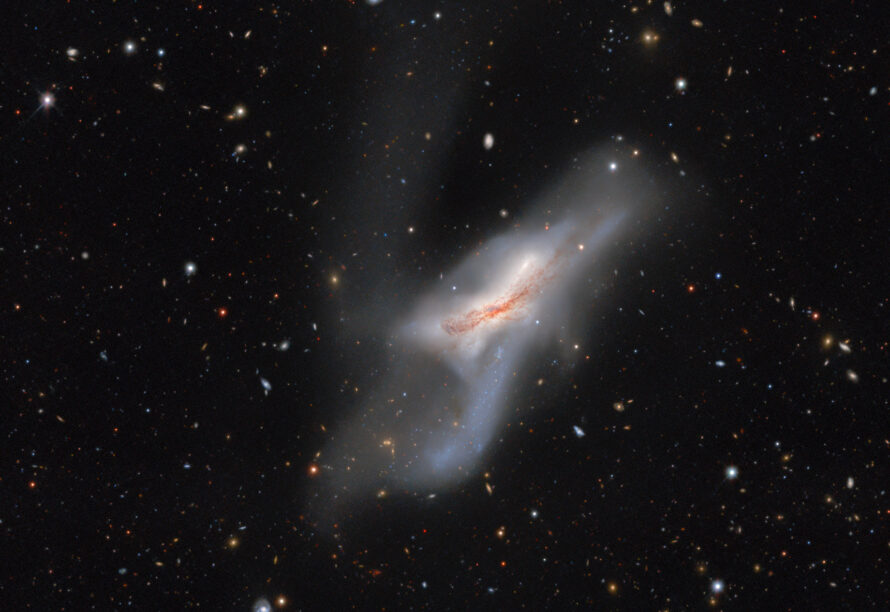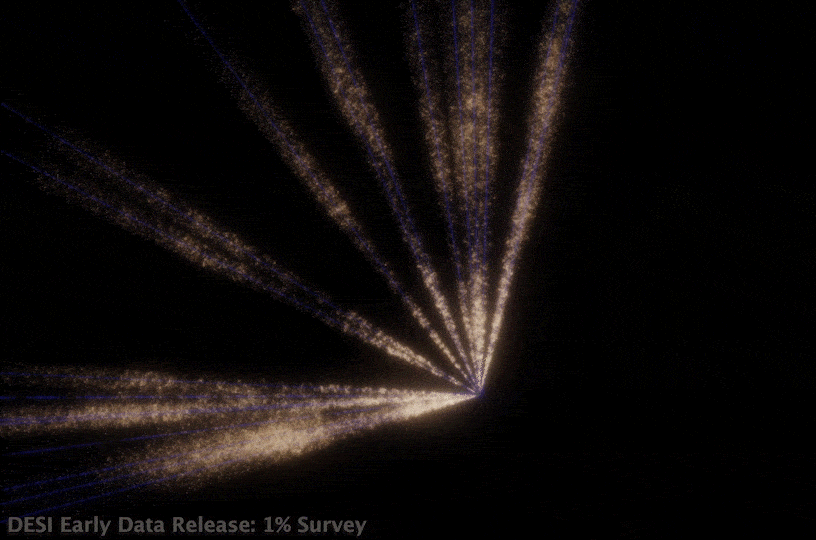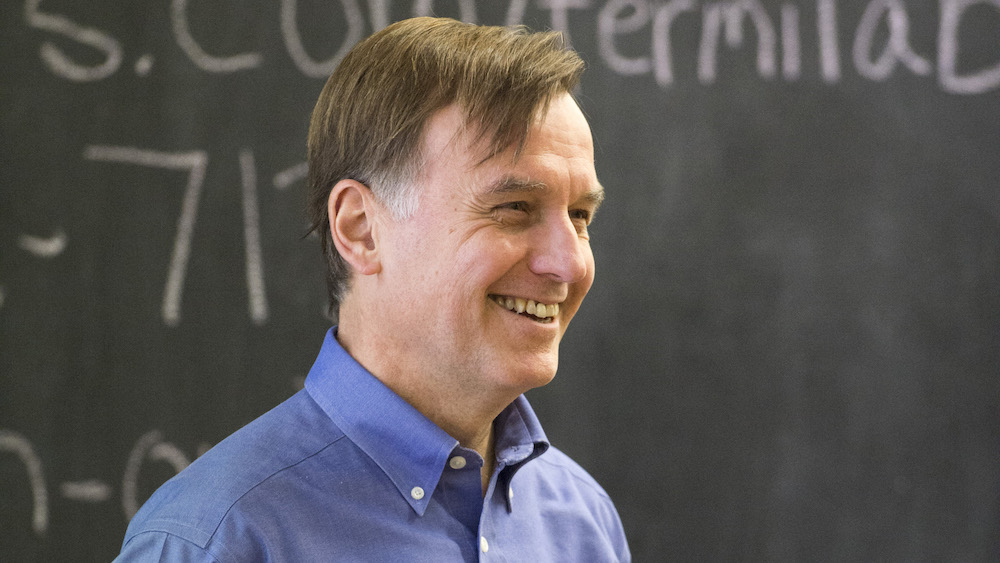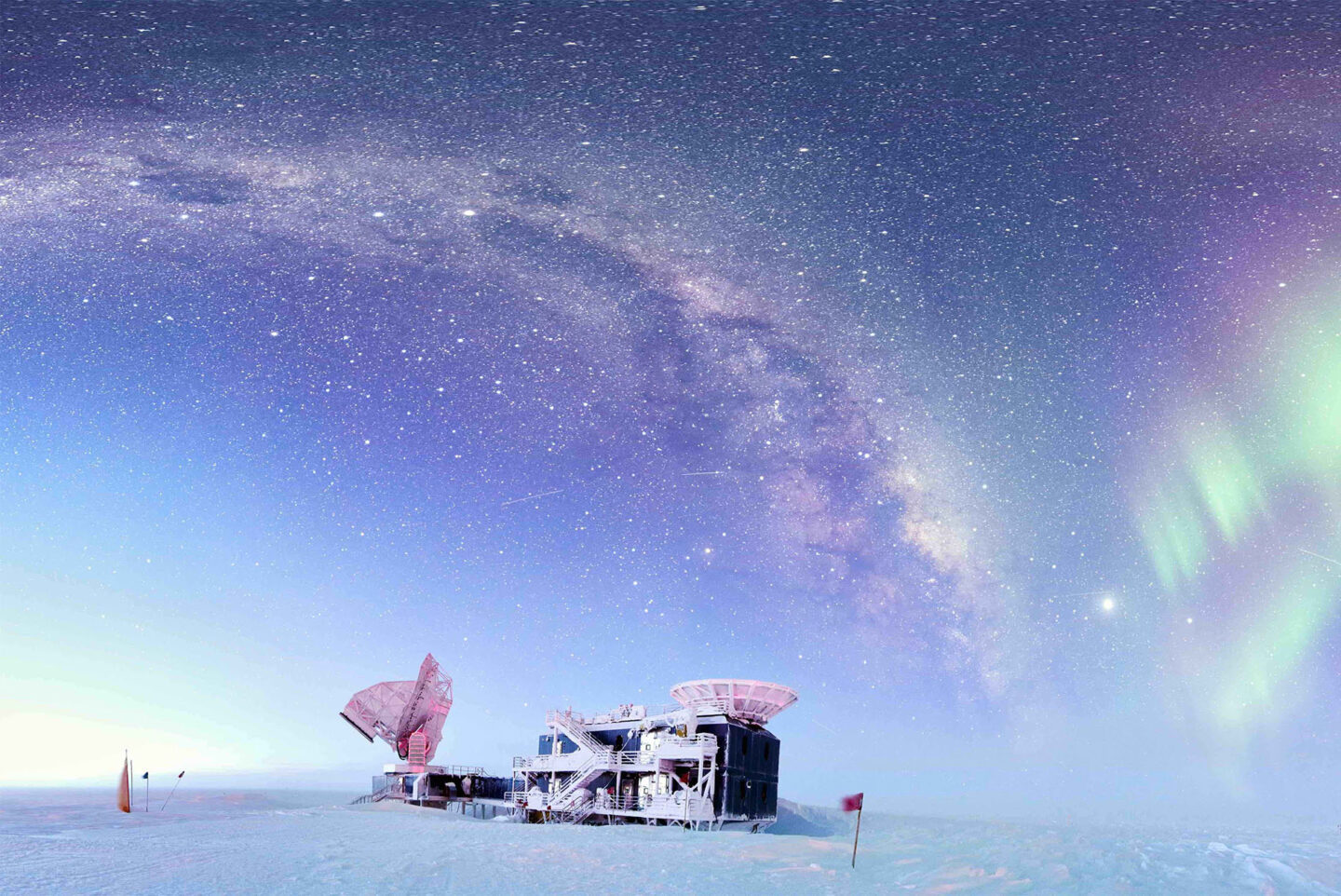Editor’s note: CMB-S4 is a next-generation experiment studying the cosmic microwave background. The project is jointly supported by the Department of Energy and the National Science Foundation. Berkeley Lab leads the partnership of national labs, universities, and institutions that will carry out the project for DOE. In addition to providing the overall project management infrastructure, Berkeley Lab also plays a lead role in technology development for the experiment’s superconducting detectors, small-aperture telescopes, and data management.
Adapted from a news release by the University of Chicago.
The National Science Foundation has awarded $3.7 million to the University of Chicago for the first year of a grant that may provide up to $21.4 million for the final designs for a next-generation set of telescopes to map the light from the earliest moments of the universe – the cosmic microwave background (CMB).
Led by the University of Chicago and the Department of Energy’s Lawrence Berkeley National Laboratory (Berkeley Lab), the collaboration seeks to build telescopes and infrastructure in both Antarctica and Chile to search for what are known as “primordial” gravitational waves – the vibrations from the Big Bang itself. It would also map the microwave light from the cosmos in incredible detail and reveal how the universe evolved over time, as well as investigate the mystery known as dark matter.
This award will fund the continuing designs for the telescopes and cameras, working towards construction readiness. The entire project, known as CMB-S4, is proposed to be jointly funded by the National Science Foundation and the U.S. Department of Energy; it is expected to cost on the order of $800 million and to come fully online in the early 2030s. The collaboration currently involves 450 scientists from more than 100 institutions, spanning 20 countries.
“With these telescopes, we will be testing our theory of how our entire universe came to be, but also looking at physics at the most extreme scales in a way we simply cannot do with particle physics experiments on Earth,” said John Carlstrom, professor at the University of Chicago and project scientist for CMB-S4.
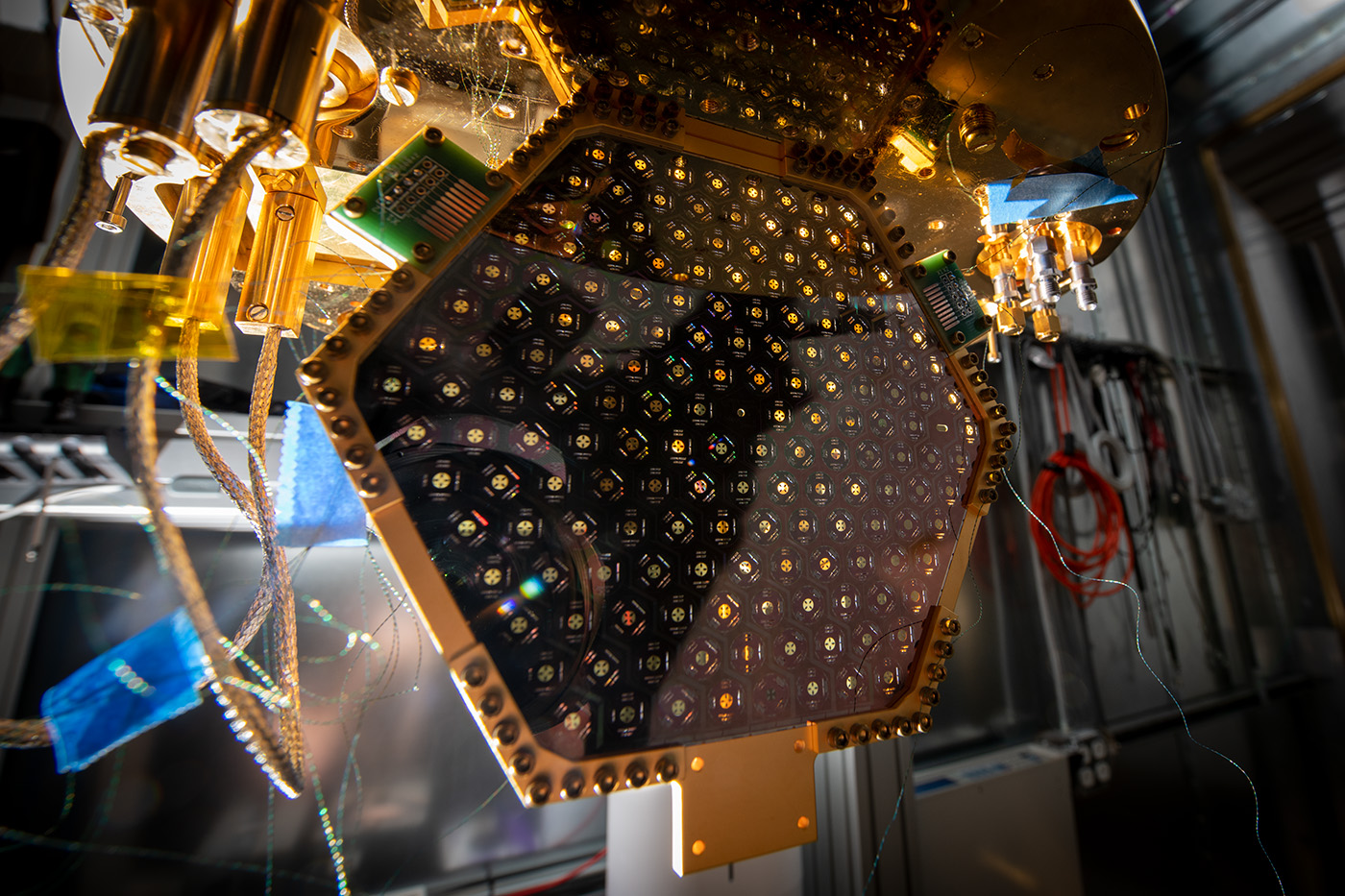
The biggest questions
The cosmic microwave background is the light still traveling across the universe from the earliest moments after the Big Bang. Because it carries information about the birth of the universe, scientists have built incredibly complex instruments to map that light from spacecraft and from the ground, both in the Chilean Atacama Plateau and at the NSF’s South Pole Station.
But we need to build a new generation of telescopes in order to answer the biggest questions – like whether our universe began with a burst of expansion at the dawn of time, known as inflation, which would have stretched minuscule quantum-mechanical fluctuations into the initial seeds of all of the structure in the universe today.
CMB-S4 would involve telescopes in two locations: a large telescope and nine smaller ones in Antarctica, and two large telescopes in the mountains of Chile. Each site plays an essential role in achieving the project’s scientific goals.
The telescopes in Chile would conduct a wide survey of the sky, trying to capture a fuller and more precise picture of the cosmic microwave background – and through it, helping us to understand the evolution and distribution of matter in the universe. The project can also look for evidence of “relic” light particles that many theories suggest may have existed in the early universe. CMB-S4 should provide clues on the nature of the mysterious stuff known as dark matter, as well as the dark energy that is causing the expansion of the universe to accelerate.
Meanwhile, the telescopes at NSF’s South Pole Station would take a very deep, sustained look at a smaller part of the sky. “The South Pole is the only location that allows a telescope to look at one place in the sky continuously, because it’s at the pole where the rest of the Earth spins around,” explained Jeff Zivick, deputy project manager for CMB-S4.
This would allow the telescopes to look for evidence of what are called primordial gravitational waves – the ripples in space-time that would have been created if the universe really did explode into being from a space much smaller than a single subatomic particle. These ripples would interact with the cosmic microwave background, creating a distinct but extremely faint signature.
This is an ambitious goal. “In many ways, the theory of inflation looks good, but most of the experimental evidence is somewhat circumstantial,” said Jim Strait, a physicist at Berkeley Lab and the project director for CMB-S4. “Finding primordial gravitational waves would be what some people have called ‘the smoking gun’ for inflation.”
Primordial gravitational waves would also be evidence to connect the force of gravity with the laws of quantum mechanics. The mismatch between the two theories, one which applies at the very largest scales in the universe and the other at the very smallest, has been plaguing scientists for decades.
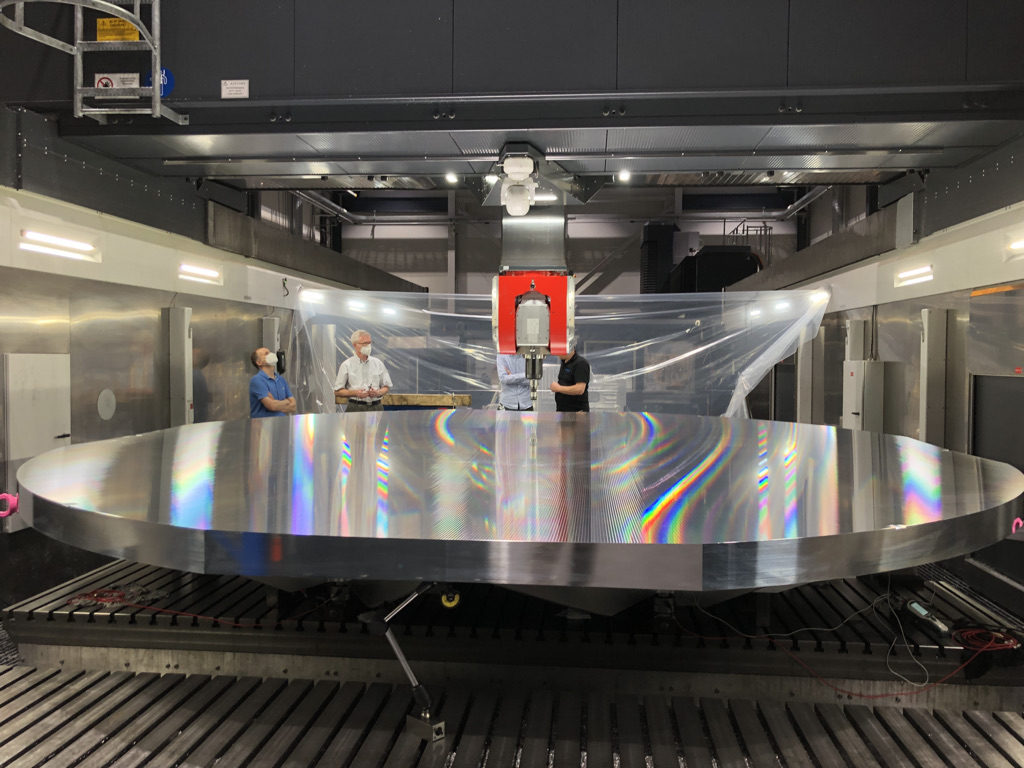
Finalizing designs
The new award from the National Science Foundation will help to fund the design work for the new telescopes and infrastructure at the sites. Going from conceptual design to final design involves analysis, simulations and modeling, and testing components of the telescopes. Although the underlying technology is well understood and has been field-tested, the design work for CMB-S4 is especially important because several of the telescopes will be the most complex of their kind ever built.
CMB-S4 is expected to have nearly 500,000 superconducting detectors, a significant increase over all precursor cosmic microwave background experiments combined. The detectors are already so sensitive that the noise in the measurement is dominated by the background noise of everything else in the sky and atmosphere. The plan, therefore, is to greatly increase the number of measurements and average them to provide a precise measurement of the signal level and greatly reduce the noise.
The increased number of detectors will also require many other components of the project to scale up in size. “For example, we will need to build multiple cryostats, larger than we have ever built before, to effectively cool all these detectors to a temperature near absolute zero,” said Brad Benson, a scientist at UChicago and Fermilab who is leading the effort to design the large camera cryostats for CMB-S4.
The CMB-S4 project is expected to be funded by the National Science Foundation and the U.S. Department of Energy. The National Science Foundation portion of the project is led by the University of Chicago, while the Department of Energy’s portion is led by Lawrence Berkeley National Laboratory.
###
Lawrence Berkeley National Laboratory (Berkeley Lab) is committed to delivering solutions for humankind through research in clean energy, a healthy planet, and discovery science. Founded in 1931 on the belief that the biggest problems are best addressed by teams, Berkeley Lab and its scientists have been recognized with 16 Nobel Prizes. Researchers from around the world rely on the lab’s world-class scientific facilities for their own pioneering research. Berkeley Lab is a multiprogram national laboratory managed by the University of California for the U.S. Department of Energy’s Office of Science.
DOE’s Office of Science is the single largest supporter of basic research in the physical sciences in the United States, and is working to address some of the most pressing challenges of our time. For more information, please visit energy.gov/science.
